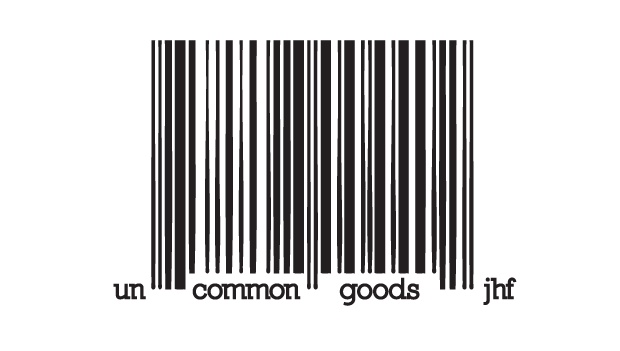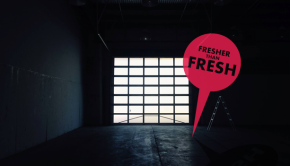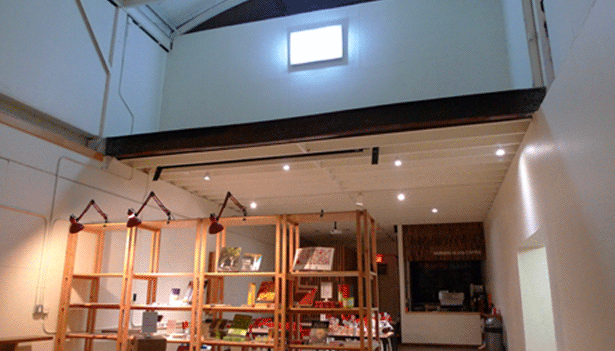Jaimey Hamilton Faris on the ‘Absurdity of Stuff We Invent for Ourselves’
A big load—uncommonly big, even—of globalization and commodification will drop onto Kakaako Tuesday, but not by way of Kamehameha Schools or whatever they plan to do with Block F.
It’ll be served by our first-ever contributor, Jaimey Hamilton Faris, who wrote a book titled, Uncommon Goods: Global Dimensions of the Readymade, published by Intellect Press (and distributed by the University of Chicago Press) in October, 2013. Hamilton Faris, a professor of art history at the University of Hawaii at Manoa, explores the ways in which artists analyze how readymade objects pervade the culture of global commodity. In choosing artists from Marcel Duchamp to Ai Weiwei, Gaye Chan, Thomas Hirschhorn, and others, Hamilton Faris looks at how “common goods hold us and our world in common”, she writes.
She will host a book launch and discussion event tonight (Tuesday, Jan., 14, at 6:30pm) at the space formerly known as R/D in Kakaako—the last ever event to be held there, we promise—which will also celebrate Christine Yano’s latest book, Pink Globalization: Hello Kitty’s Trek Across the Pacific, from which we published an excerpt. In that book, Yano, the chair of UH’s Anthropology Department, looks at Hello Kitty’s effects on Japanese culture and how Hello Kitty came to dominate the world. Both books will be for sale at the event, and each other will discuss ideas from her book.
“Where my book most corresponds to [Yano’s Pink Globalization],” says Hamilton Faris, “is in my discussion on Takashi Murakami, a Japanese artist really interested in the way Hello Kitty, Pokemon, and these Japanese characters have branded themselves. Really interesting in terms of thinking about an image as a good or commodity that can be sold. The advent of media culture, and intellectual property—it’s really an interesting discussion to see not only how this image creates money for a corporation or artist, but also something that people consider a tangible thing to own and be a part of. What I love about Yano’s work is the ethnographic aspect, discussing how invested people are in the idea of Hello Kitty. We all get really invested in these commodities; we can’t imagine living without them.”
Perhaps hers and Yano’s books, too, will fall into the panoply of widespread consumed things, items simultaneously critical and babies of the material world of the readymade.
Can you tell me why you chose to write a book about commodities in the way of creative expression?
First, as a someone who’s fascinated by all of the stuff that we produce in the world, I have always been drawn to artists who use common, everyday objects in their work to meditate on all this stuff. It’s kind of been an obsession in my life to think about where all this stuff goes, how it affects the environment, how it affects everyone who produces it, uses it, the environmental cost of living in a society that’s object intensive. And I’m also fascinated by the way that we need objects to talk about ourselves. The way we surround ourselves with objects to tell people about ourselves, the clothes we wear, books we have, technology we use. All of it. We’re surrounded by it, yet we don’t notice it. So I’ve just been really fascinated by that and the history of art and the artists that call attention to our relationship to our objects that we produce. I think that, just as a consumer, I’ve been fascinated by this.
I’m fascinated by the fact that we can make millions of smell relief devices for cats, for example. The absurdity of stuff that we invent for ourselves as in, Oh we need this object, or Wouldn’t it be nice if we had this object. I kind of look at it as a historian and one interested in art and creativity. I see human beings as these really fascinating animals that just love to constantly invent things. And so an artist tends to take an absurdist and magical view of invention and that aspect of humanity. If you look at the electrocord that connects my Mac computer to the wall. Just a weird, interesting object. Why did we invent this weird snake with a box and two little feet, you know? I think artists have that same sense of curiosity about why we create the things we create.
Is it especially significant for us in Hawaii, who are so dependent on the shipment of these goods?
I actually think that people are unaware of the fact that, even if they were living on the continental U.S., things are shipped from around the world. It’s almost as immaterially intense or just as expensive to get things to Ohio as it is to get them to Honolulu. We are more isolated, that’s definitely true, but I think that people don’t realize or recognize that most of the objects at their fingertips are made halfway around the world and were shipped to them. Whereas Hawaii is an extremity, it’s not an exception. It definitely calls an attention to a lifestyle that’s not so sustainable.
What do you mean by “uncommon goods”?
The term, “uncommon goods” is a play on a number of things. First, the term, “common goods” is usually a term that’s synonymous with an everyday commodity. Apparel, food, electronic objects, anything that you would find at Wal-Mart or Target. It’s kind of a general term that we’ve used consistently as a landscape for objects. I like that term for that reason. Within common goods, there’s also a notion for the play of common good. A lot of people who talk about common goods are accessed to the wealth of modernity as being of common good. The artists mentioned in the book really question whether our access to consumerism—anything that we want—really leads to a common good for all of us. Especially when we are often ignorant to the social costs of making something. Then I added the prefix UN- to the mix to highlight how artists use these common goods in unusual ways in order to visualize the stake or cost of those goods.
Are there any local artists who come to your mind who explore this successfully?
I think first of Maikai Tubbs and his use of plastics and recycled materials in his work. The piece he did for the Honolulu Museum of Art a couple of years ago: rosewood bushes he made out of plastic spoons, forks, and knives. It’s a meditation on his own relationships to consumer objects and plastics, but making it into the form of a wood rose vine, an invasive species in Hawaii—he’s calling attention to plastic itself, the consumer culture, as something we need to pay attention to as its own invasive species.
Also, Gaye Chan’s Eating in Public is included in the last chapter of the book, which is on land commodification, and I wanted to highlight the fact that land itself has also become more and more of a consumer commodity as part of the global property system since the ‘90s. “Eating in public.” Gaye’s trying to create spaces and a relationship to land that’s not one of ownership, one of land-as-commodity. And sharing the food—her freestore is the same thing. There’s no money exchanged, just dropping off and picking up things. It’s an alternative to the commodity system that we exist within. The project is that we critique their system and a way of visualizing an alternative to that system.
You also devote a chapter to the consumerism of the apparel industry, which I think, given that our fashion industry here is in a boom period, is especially relevant to Honolulu. How is fashion figured into the art/commodification dialogue?
A lot of the artists who I talk about in the chapter on apparel not only use cloth but talk about all the elements of the fashion industry. They construct their installations a lot of times to look as though they’re related to the fashion industry. In a way, it’s a visual language: We know when we go into a department store. But the difference is that, because of the way these artists are composing the fabric or mannequins, they make it a surreal space, or an uncommon space, which is one of the ways to denaturalize that space, to see these mannequins, to see the environment to want to purchase new clothes. They’re using those same elements to get at the underside of the apparel economy. The chapter on apparel is really intersting because it’s so obviously a commodity; it’s so obviously a common good, but it’s also one of the most obviously overly produced commodity goods. We get cheap shirts that we wear 2-3 times, they’re shoddily made so they come apart or whatever, or the fashion’s out of style. It’s really obvious to see the unsustainability to that kind of good.
The Uncommon Goods/Pink Globalization book launch is Tuesday, Jan. 14, 6:30pm, at 691 Auahi St. The event is free. For further reading, see the excerpt from Uncommon Goods: Global Dimensions of the Readymade below and click here for an excerpt from Pink Globalization.
Common goods. This is a funny and paradoxical term sometimes used to describe the nature of the commodities we use everyday. While common goods may seem mundane or widespread, they are actually not mutually held, or “commonly” shared materials at all. By definition, commodities uphold the idea of personal property, of individual selection and taste, one’s distinguishing mark of personality from another. Jean-Luc Nancy argues that in their very prevalence, now in global dimensions, commodities have weakened our desire to share resources as a community, as well as our desire to represent our belonging together and to the world. In other words, why should we share in the “common good” when we can each have our own “common goods”?
Multi-media art resounds with the remixed residue of global image consumption in ways that point to the fluidity between free and copyrighted digital information. In fact, many artists now seem to focus an entire oeuvre or career on exploring one material and its history as a commodity. Their art clearly and unequivocally asks questions about the nature of the object as commodity: When is it defined as such, by whom, and by what process does it come into being?
Especially since the 1990s, the practice of incorporating commodities in art to address these questions has become ever more pervasive. Installation art has often used site-specific strategies to reconnect viewers to the history of exhibition spaces that were once factories. They also use an often aggressive accumulation of commodities in a variety of ways to highlight the problematic origins and transformations of raw material and labor into consumer goods. Relational art often uses the commodity as a tool to refocus a participant’s habitude toward consumer and work environments and their own participation in affirming a commodity’s importance.
Many current art practices appropriate and transform these common goods into forms, shapes, and attitudes that often expose their fundamental “uncommonness”. Examples include Jason Rhoades’s PeaRoeFoam, Yinka Shonibare’s batik Victorian bustles, or Cory Arcangel’s endlessly looped Super Mario Clouds. In making commodities unusual, these artists allow us to gain perspective on recent historical transformations of the commodity world and the often radically undemocratic nature of their becoming. New artistic readymade forms put the paradoxes of our global economy and resources to the test; they allow us to ask: What are “goods” now, anyway? Are they still tangible and material? How prevalent are they, really? Who makes them, who consumes them, and do these people have any shared sense of relation or interconnection with each other? The artists’ interests, not surprisingly, have to do with their own historical and biographical investments in these commodities. Many of these materials, as commodified forms, played an important role in the artists’ coming of age. Particularly aware of their position as historical subjects within the grand scope of capitalist production, the artists are clearly and understandably fascinated by the ability of a material’s social life to resonate so deeply in their own.









